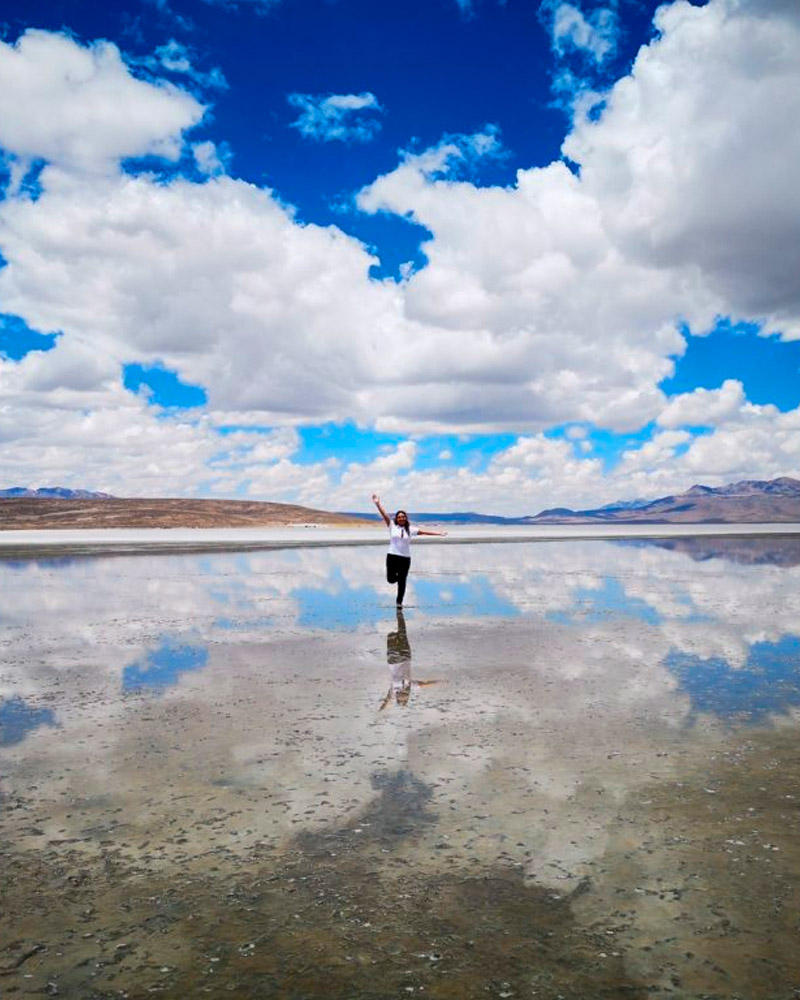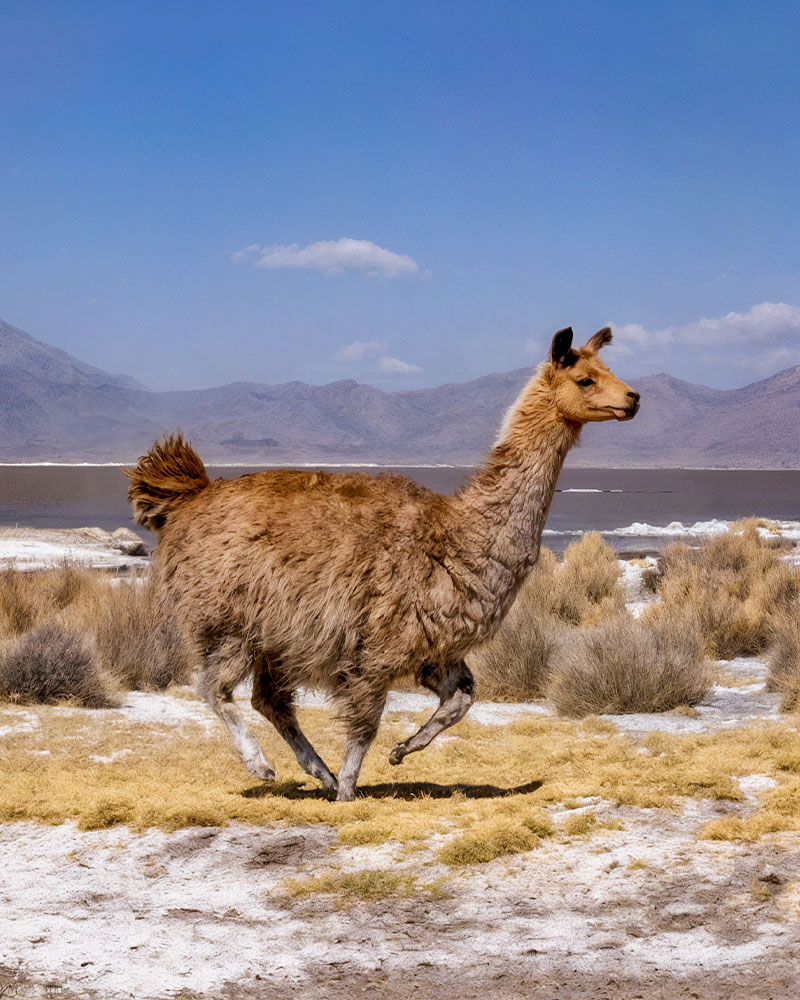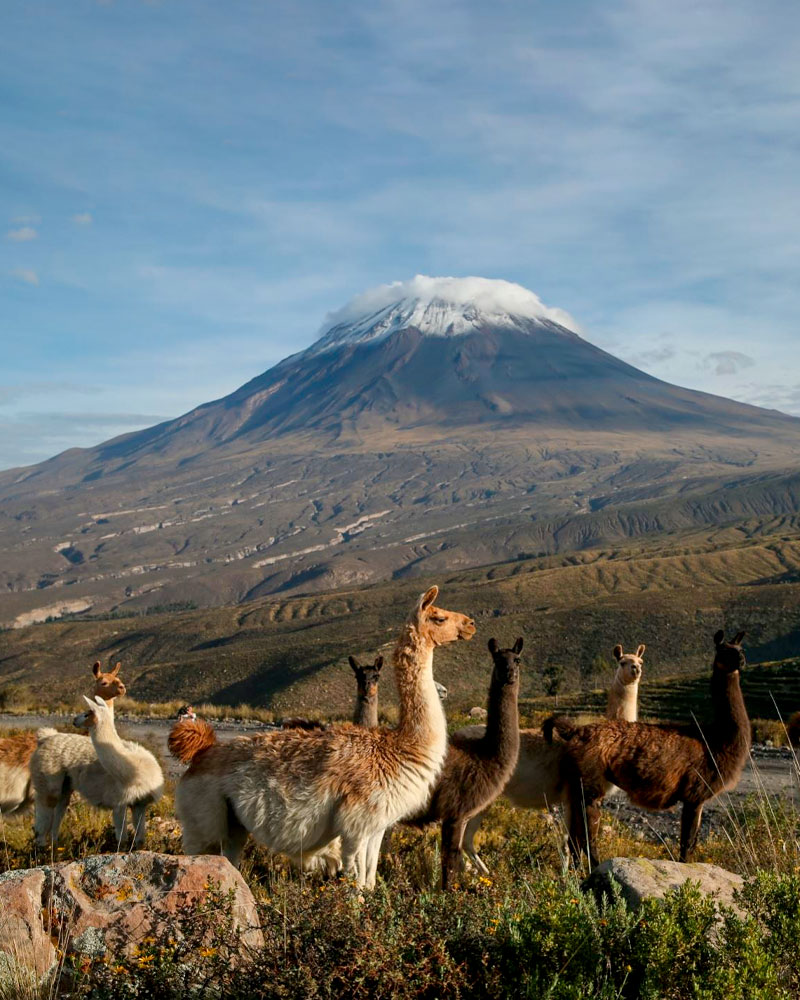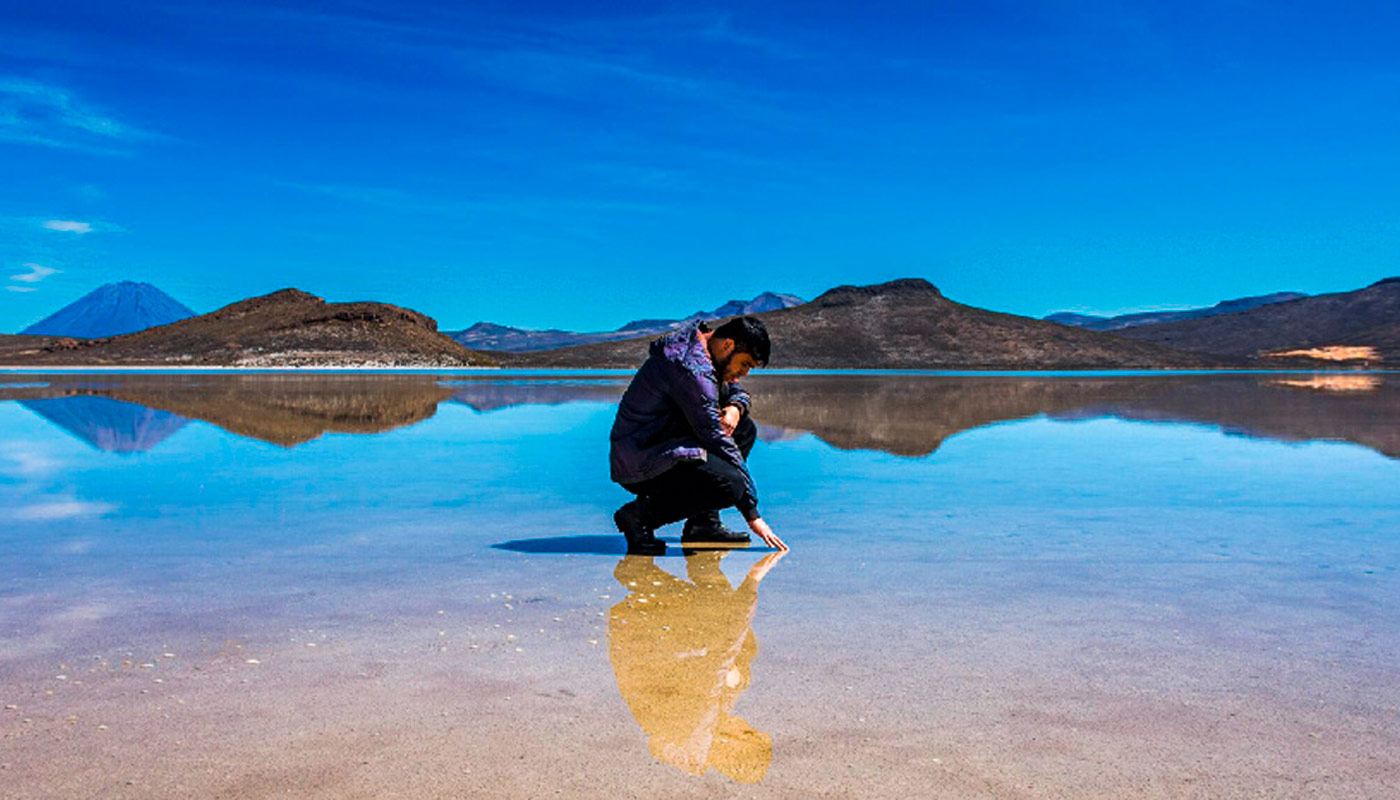

Arequipa is a department of many surprises and the Laguna de Salinas is a place that no traveler can miss. This wonderful salt lake is part of the Salinas y Aguada Blanca National Reserve and attracts many tourists. Ready to visit it? Quiet!
The Salinas and Aguada Blanca National Reserve covers an area of approximately 366,936 hectares, was considered a National Reserve since 1979 and is located in the Arequipa region and part of Moquegua; at a height that ranges between 3,500 to 6,050 meters above sea level. The name that the reserve bears has its cause in the presence of the Salinas Lagoon and the Aguada Blanca pampa that are included in its territory.
Within this National Reserve it is important to find at least 70 different types of birds, among which it is worth mentioning the presence of the parihuanas, both the common flamingo and the Andean parihuana or also the Parihuana de James. In this reserve you can also find the Andean condor, which is considered the largest flying bird in the world. It is important among the bird species that are in danger or at risk of extinction, in addition to the condor and the Andean flamingo mentioned: the suri, which is a species of Andean ostrich.
The reserve is also important because of the presence of the Mauka stone forest, which has become a natural habitat for the country's viscachas. Different species of mammals are also important within the National Reserve, 24 in total that inhabit this area and among which the vicuna and alpaca, as well as endangered animals such as the guanaco and the taruca, stand out. There are other types of animals such as amphibians, reptiles and fish, which together with the above give an average of 185 different vertebrate animal species.
In addition to the aforementioned animals in danger, there are also among them the Peruvian logirostro bat, an endemic animal of the area and that is classified as critically endangered. The Andean cat is also another animal that is in a situation of danger to the same degree as the guanaco, the mantaco and the white-tailed muleteer. The site also houses five animal species in the vulnerable category and 10 in the near-threatened state.
It is located at 4300 m.a.s.l. on the south side of the National Reserve of Salinas and Aguada Blanca, in the Peasant Community of Salinas Huito, in the district of San Juan de Tarucani, province of Arequipa, Peruvian territory.
It is an endorheic lagoon of shallow waters (shallow) in which borate and other compounds are deposited that give it that whitish color.
It is the preferred place for bird watchers, since there are an infinity of endemic and migratory birds, especially the three varieties of South American flamingos (common, Andean and James).
It is visited by carriageway, between the Misti Volcano and the Pichu Pichu, (Chiguata Route), approximately 3 to 4 hours from the city of Arequipa.
The landscape is impressive, you can see flora (such as queñua and yareta), and high Andean fauna: vizcachas, tarucas, South American camelids such as alpaca llama and vicuna; high Andean birds such as: guayatas or Andean goose, Andean ducks, among others.
In addition, you can see the Misti and Ubinas volcanoes, the latter in an eruptive state.
The Laguna de Salinas is located in the department of Arequipa and is within the National Reserve of Salinas and Aguada Blanca. It has an area of 354 hectares where nature is present at all times, being a real show for visitors.
When it was discovered, the importance of the Salinas Lagoon rested on the vicuñas and their protection. However, the ecosystem of this space soon represented something more valuable, especially the salt lake for which it is so well known today. Finally, in 1979 this natural space was created through Supreme Decree Number 070-79-AA.
When you visit the Laguna de Salinas you will find a space ordered by a network of paths that, among their different reasons, allow the protection of the area. On these paths, you will have the opportunity to see all the attractions that surround the Salinas Lagoon, admire the natural landscapes and feel part of the ecosystem.
The Salinas y Aguada Blanca National Reserve covers an impressive area of 366,936 hectares. This places it among Peru's largest natural protected areas, comparable in its ecological value and size to important regions like the Peruvian Amazon, highlighting the Manu National Park. Even though it's in the southern Andean part, in the Arequipa and Moquegua regions, its large size and variety make it a key part of the national conservation system, just like the huge Amazon rainforest that protect hundreds of endangered species. Unlike the tropical jungle, this high-Andean ecosystem offers a landscape of puna, volcanoes, and salt flats, but with equally valuable biological richness.
One of the treasures of this reserve is its biodiversity, made up of 358 plant species and a remarkable variety of Andean wildlife. Animals like vicunas and llamas roam freely in the Salinas plains, but they are also icons of the landscape in other parts of Peru, like the Sacred Valley and the areas around Machu Picchu. Also, the Salinas lagoon is home to species found only there, such as the Arequipa lizard and the unique Salinas pygmy mouse, which can only be found in this region.
The landscapes of the Salinas y Aguada Blanca National Reserve look like they are from a painting. Dominated by the impressive Chachani and Misti volcano, whose snow-capped peaks stand out against the Andean sky, the reserve offers postcard views everywhere. One of its main attractions is the Laguna de Salinas, a salt flat that, depending on the season, is covered with water or forms natural mirrors where the mountains reflect. This scene of calm and grandeur invites nature lovers, photographers, and trekkers to be amazed by one of the most stunning landscapes in southern Peru.
 |  |  |
In the Laguna de Salinas there is much to discover. It is known that tourists who visit this place are amazed by the abundant nature. For example, whoever goes to the Laguna de Salinas will find the Huarancante and Chuccura snow-capped mountains, which are impressive due to their beauty. The view of these two mountains is spectacular and many take the opportunity to take photos.
The Salinas Lagoon is a great natural paradise, experts say so and its bofedales (wetlands) and lagoons prove it. Walking through this place, you will find the Chalaque and Turca rivers, whose waters are calm and fed by the previous ones.
When touring this tourist attraction, you can glimpse small hot springs. Without a doubt, in the Laguna de Salinas there are different natural attractions that captivate anyone.
The show continues thanks to its fauna. Different types of animals live in the Laguna de Salinas, the most popular being the flamingo. Here you can see many types of flamingos, among which are the common, the James and the Andean.
In addition, the Laguna de Salinas is a place of passage for more than 20,000 types of migratory birds such as the Tringa flavipes, the Calidris fuscicollis or the Phalaropus tricolor.
Getting to the lagoon is very simple. If you are in the capital, the first thing to do is look for a bus that goes to Arequipa. There are many safe, reliable companies at a very good price. The trip lasts approximately 15 hours, so you must take the necessary precautions.
Once in Arequipa the adventure begins. There are different ways to get to Laguna de Salinas, in redBus we show you the 3 fastest. The first is taking a taxi from the Plaza de Armas in Arequipa, you pay between S/40 and S/60 soles, approximately. Another option is hiring a car from a company, family member or acquaintance. And finally, and the one that most visitors choose, hire a tour that allows you to freely enjoy with family or friends.
The route from the city to the lagoon is approximately 3 hours, and on the way you will be able to appreciate beautiful landscapes and take excellent photographs of the flora and fauna of Arequipa.
Due to the height at which it is located (approximately 4,300 meters above sea level), the Salinas Lagoon is a tourist attraction with a very cold climate. In fact, at night the temperature can drop to minus 20°C, making it impossible to visit during this time of day. The rain is also very present in the Laguna de Salinas, therefore, if you want to avoid it, it is advisable to go between the months of January and March.

No one should be left wanting to get to know all of Arequipa. Therefore, if you are already in the department, here we show you other tourist options in addition to the Salinas Lagoon. Let the tour begin!
A great place to visit, essential on the trip to Arequipa, is the Colca Canyon. With a depth of 4,160 meters, it is one of the deepest canyons in the world. It is perfect to forget about obligations and clear your mind by connecting with nature.
Of course, every traveler must be careful because the Colca is located at a great height, so it is always recommended to take some medicine to avoid any inconvenience. An activity that cannot be missed is the sighting of the andean condor, the vizcacha or the puma.
In Arequipa there is also the Misti Volcano, known by all Peruvians. At 5,822 meters above sea level, it is very easily accessible, so any interested traveler can schedule a trekking route here, but keep in mind that the volcano is active. The 1998 expeditions found skeletons here, so it is believed that it was a place where human sacrifices were made.
For lovers of history and architecture, there is the Santa Catalina Monastery, one of the main tourist attractions in this department. It is a monastery built in pink and white ashlar, it has large patios, gardens and small squares.
It was inaugurated in 1970 with the aim of educating the daughters of the wealthiest families and, today, it is known that more than 300 women entered it during the 18th century.
If you want to visit Machu Picchu, we recommend you to book your Machu Picchu Entrance Tickets in advance, so you will enjoy your Vacation in Machu Picchu without any problem.